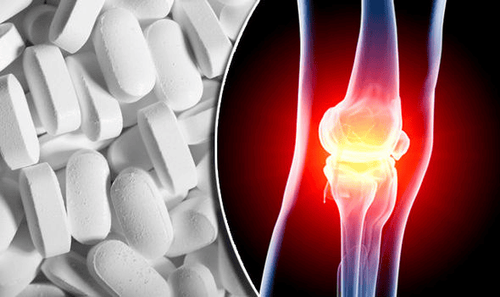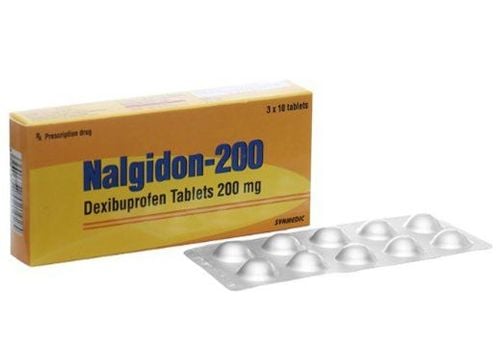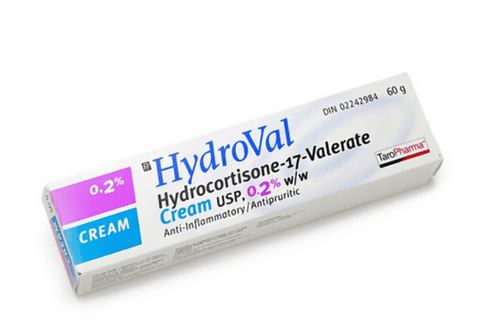This is an automatically translated article.
Caflaamtil belongs to the group of analgesics, antipyretics, non-steroidal anti-inflammatory drugs and is prepared in the form of an injectable solution. The main ingredient of the drug Caflaamtil is Diclofenac, which is indicated in the treatment of chronic arthritis, crystal arthritis... During treatment with Caflaamtil, it may cause some side effects such as epigastric pain, sadness. vomiting and vomiting... Therefore, patients need to learn carefully the information before use.
1. Mechanism of action of the drug Caflaamtil
The main ingredient of Caflaamtil is Diclofenac, which has a rapid onset of action and is suitable for the treatment of acute pain and inflammation. In addition, this compound also inhibits the biosynthesis of prostaglandins, which play a large role in inflammation, pain, and fever. Diclofenac has also been shown to have a strong analgesic effect in moderate to severe pain. Where inflammation is present, such as traumatic inflammation that can be treated surgically, Caflaamtil can provide rapid relief of spontaneous pain and movement pain. Thereby, helping to reduce swelling in the wound.In addition, this compound also helps reduce headaches, improve the symptoms of nausea that accompanies headaches.
2. Indications and contraindications to the use of Caflaamtil
Caflaamtil is indicated for the long-term treatment of symptoms such as chronic arthritis, rheumatoid arthritis, ankylosing spondylitis or in associated syndromes such as Fiessiger leroy reiter and rheumatic fever in psoriasis and stiff joints that cause pain and loss of ability to work. Caflaamtil is also indicated for the short-term treatment of acute pain associated with rheumatic diseases and acute post-traumatic injury of the musculoskeletal system with conditions of periarthritis of the shoulder, forearm, tendonitis. , bursitis , synovitis , bursitis tendon. In addition, the drug Caflaamtil is also effective in epidemiological arthritis, low back pain, severe radiculopathy, acute gout attacks, renal colic, loss. Caflaamtil can also be indicated in pain relief from minor surgery, oral surgery, tonsillectomy, trauma, menstrual pain, ear, nose and throat infections. However, Caflaamtil is also contraindicated in patients with hypersensitivity to the drug's ingredients, other anti-inflammatory drugs, aspirin, patients with active gastric ulcer, patients with asthma, bronchospasm, bleeding, etc. cardiovascular disease, liver failure or contact lens wearers, pregnant and lactating women.3 Dosage and use of Caflaamtil
Caflaamtil is given by deep and slow intramuscular injection. The usual dose used is 1 ampule of 75ml capacity once a day. In more severe cases, it is possible to inject 1 ampoule of 75ml and twice a day. If necessary, the patient still needs to be supplemented with Caflaamtil at an oral dose of 50mg/day. And then, continue oral treatment.
Note: The recommended dose of Caflaamtil is for reference only. Therefore, before using Caflaamtil, patients need to follow the doctor's instructions.
4. Side effects when using Caflaamtil
Caflaamtil can cause some unwanted side effects during treatment. However, with each case, the side effects of Caflaamtil can vary in severity from mild to severe.
Possible treatment-related reported adverse effects of Caflaamtil are phlebitis and thrombophlebitis. Common clinical and systemic adverse reactions may all be related to the composition of Caflaamtil with signs such as pruritus, urticaria, fever, nausea, vomiting, oral thrush, phlebitis, phlebitis, and phlebitis. block after intravenous injection, pain and inflammation at the injection site,... In some cases, more serious side effects may occur including: gastrointestinal bleeding, oral mucositis, visual disturbances, hearing loss, acute renal failure, increased aminotransferase, palpitations, high blood pressure and congestive heart failure ...
Some notes during the use of Caflaamtil:
For pregnant and nursing women Breastfeeding should be cautious when using Caflaamtil. Patients should be advised to use Caflaamtil from their doctor, and carefully analyze the benefits and risks before using the drug. Caflaamtil may change how it works and increase its side effects. Therefore, to avoid drug interactions with Caflaamtil, the patient should provide the doctor with a list of previously used drugs, including prescription and non-prescription drugs, herbs, ... Using Caflaamtil should be noted. when the manifestations of allergy to the drug Caflaamtil. At the same time, the patient should notify the doctor so that he can promptly treat the side effects of the drug. Caflaamtil has interactions with other drugs such as lithium, digozin, diuretics, anticoagulants, methotrexate. Above is all information about Caflaamtil, patients need to carefully read the instructions for use, consult a doctor / pharmacist before using. Note, Caflaamtil is a prescription drug, so patients should absolutely not buy drugs to treat at home because they may encounter unwanted side effects.













